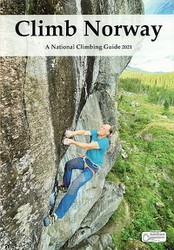Seasonality
Description
Norway´s national mountain. An inspiring place to play in the mountains in all seasons. There is a pretty comprehensive summary available here (in Norwegian).
Access issues inherited from Ofoten
The tourist website sucks. The TL/DR is either get the train from Sweden into Narvik (via Stockholm or Kiruna) or Fly (into Evenes or Kiruna). Pick up a hire car from either airport. For international travellers, an overnight train from Stockholm is usually the cheapest and most relaxing option.
Frustratingly, flights and connecting buses rarely line up in the North. With some patience, you can use public transport to get between Evenes, Narvik, Lofoten and Tromsø. Search here
Link to the overnight Swedish rail here
Plan your Trip
Information needed
This crag does not have approach information. Could you describe the approach to this crag?
If you can help provide a better quality resource for the climbing community then please click 'edit this crag' button near the top of the page.
Selected Guidebooks more Hide
Author(s): R.Carlsen und L. V. Wagelid
Date: 2021
ISBN: 9788299776981
A comprehensive guidebook covering 34 of the main sport climbing areas in Norway, detailing many 1,000's of routes.
Accommodations nearby more Hide
Share this
Photos Browse all photos
/e2/98/e2989b1a2ff3562bb93e171be226fad33e906a04)
Romane,Clara on ★★★ Sydpillaren 6-

Karl,Fanny on ★★★ Vestveggen 6+ - P1

Michael Oldroyd on ★★★ Sydpillaren 6- - P7

Philip C on ★★★ Sydpillaren 6- - P11
Get a detailed insight with a timeline showing
- Ticks by climbers like you
- Discussions of the community
- Updates to the index by our users
- and many more things.
Login to see the timeline!


